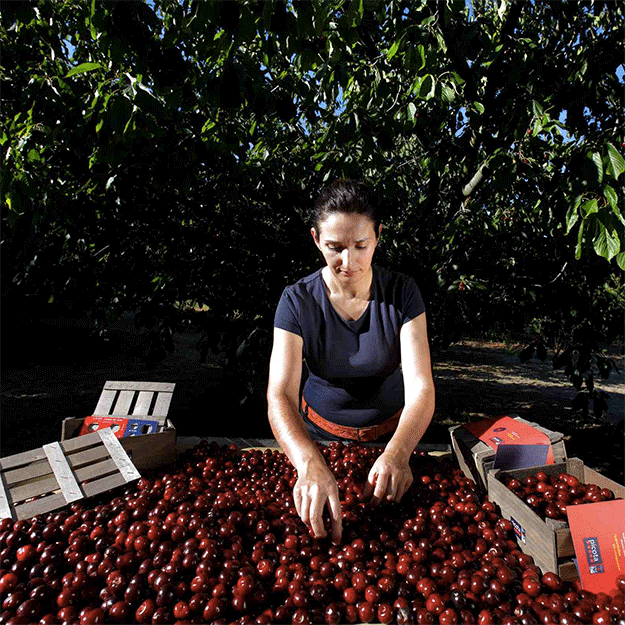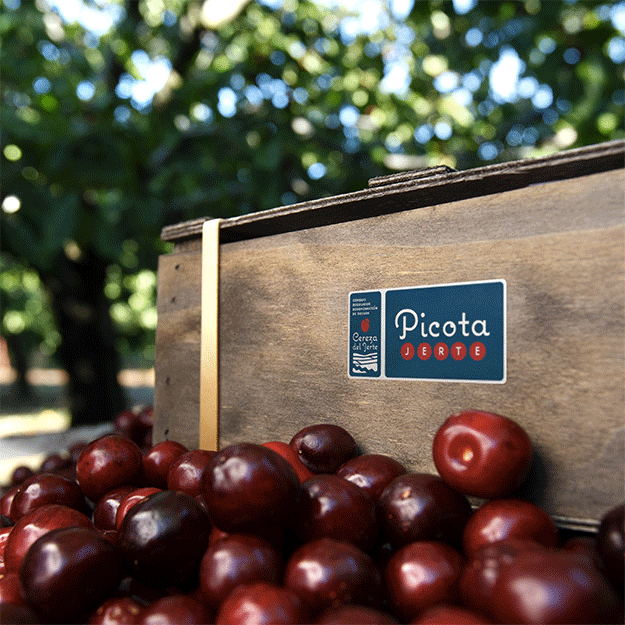.png.transform/rendition-xs/image_image%20(1).png)
Cherries from the Jerte Valley, the Treasures of the Spanish Spring
There are few Spanish fruits that incite as much adoration and fanfare as the cherries that are produced each year in the Jerte Valley, the appearance of which in markets and shops is sweetly synonymous with the arrival of spring.
Sometime in mid to late March each year, an influx of visitors from all over the world turn onto the N110 highway that runs between the small Spanish cities of Ávila (Castile-León) and Plasencia (Extremadura)—both of them walled and brimming with history. Even so, at this time of year there can be only one destination: the stunning Jerte Valley that cuts dramatically through two granite mountains near the northern border of Extremadura. Home to eleven small towns that have been associated with cherry-growing since at least the 14th century, this deep-green valley turns white in the springtime, as its more-than a million and a half cherry trees bloom, blanketing this fertile dale with their snowy blossoms.
The sweetest harvest of the Jerte Cherries
This unequaled sight is well worth the journey to this hamlet, however, it is merely a prelude to the main event, which occurs some weeks later when the first cherries of the year (of the Navilinda variety) appear in markets all over the country, signaling the beginning of cherry season in this corner of Spain.
The most sought-after fruits appear a little bit later, however, a unique type of native cherry known as Picota. These are the stars of Protected Denomination of Origin Cerezas del Jerte, and without a doubt they are the true treasures of the Jerte Valley.

Picotas may be grown in one of four traditional varieties: Amburnés, Pico Limón Negro, Pico Negro and Pico Colorado. In high-demand for their characteristic sweet flavor and pleasantly firm texture, they are easy to identify due to the fact that their stalks stay on the trees when picked. Picotas are slightly smaller than other cherries, and have a deep reddish-purple hue. They are typically placed by hand into traditional chestnut-wood baskets and are not subject to any post-harvest treatments that might affect their natural goodness. However, this also means that they must reach consumers in less than two weeks or so after picking.
The season for these delicacies lasts for approximately six weeks from the end of June through the beginning of August, and they account for around 35–40% of total cherry production in the valley. And although these Spanish cherries are considered delicacies in Spain, they are also wildly popular in other markets, with around 70% of the harvest exported each year, particularly to Germany and the United Kingdom. In total, some 18,000 tons of cherries were harvested in Jerte in 2018, of which between 4,000 and 5,000 were picotas. However, the amount of fruit produced with DO Certification was somewhat less, with only seven certified companies in the valley.
Springtime celebrations with Spanish cherries
No matter how fevered the wait may be for the year’s treasured picotas, there is plenty to do in the valley to help pass the time. The annual Fiesta del Cerezo en Flor (Cherry Blossom Festival) has been infusing the springtime with a sense of celebration for the past several decades.

The event is divided up into three different segments, the first of which, Despertar del Valle (the waking of the valley), typically begins on the first day of spring with the first blooms. It is followed by the Fiesta del Cerezo en Flor (the cherry blossom festival), the full-on celebration of the blooming valley, which is considered to be of “National Touristic Interest. This portion of the celebration features a wide range of cultural, athletic, gastronomic and traditional activities to enjoy throughout the Jerte Valley. And finally, the third segment is known as the Lluvia de Pétalos (rain of petals), which typically lasts until early May.
Avant-garde flavors and Spanish cherries
Exploring the culinary possibilities of Jerte cherries is nothing new in this Denomination of Origin. Last year, for example, the Regulatory Board of PDO Cerezas del Jerte tasked famed Spanish chefs Javier and Sergio Torres with creating two avant-garde desserts using these delectable Spanish fruits. The results were Nube helada de chocolate y cerezas del Jerte (Frozen cloud of chocolate and Jerte cherries) and Guinda de Picota del Jerte (preserved picota cherry from Jerte). Both were featured on the menu at Cocina Hermanos Torres restaurant in Barcelona until the end of the 2018 cherry season. Additionally, the Regulatory Board produced two cooking videos. One features Sergio Torres preparing the dessert Picotas del Jerte a la pimienta, crema de almendras y sabayón (Jerte picotas with pepper, almond cream and sabayon), and in the other, Javier Torres prepares a dish of Quail with Jerte Cherries and spices.
Text: Adrienne Smith /@ICEX
Photos: Regulatory Council DOP Cereza del Jerte


